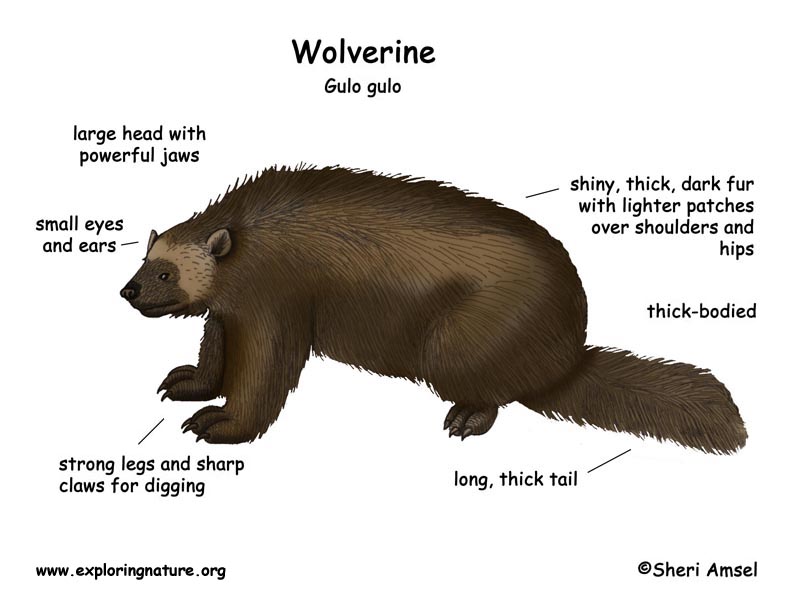

They are found in northern Europe, Siberia, northern North America, Alaska, and the northwestern U.S.
They live in cold, northern (boreal) forests, in the mountains, and on the tundra.
They are the largest member of the weasel family in North America. They are thick-bodied, weighing up to 40 pounds and reaching 3.5 feet long. They have shiny, thick, dark fur with lighter patches over their shoulders and hips. They have a large head with powerful jaws, small eyes and ears. They have strong legs and claws for digging, swimming and running! They don’t see very well but they have a great sense of smell.
They are active at night (nocturnal) mostly. They live alone except to mate and will fight to defend their territory. They are fierce animals. They will scare off bears, mountain lions and wolves from their food.
They eat rodents, deer, moose, elk and bighorn sheep (carnivores). They also find (scavenge) dead animals (carrion) and eggs, roots and berries. They sometimes store food to eat later.
Their only real predators are large bears, wolf packs and man.
Females are pregnant for 1-2 months (gestation). Females build a den where they have 1-6 babies, which can all have different fathers.
They can live more than 10 years in the wild. They are listed as a "vulnerable" species.
Kingdom: Animalia
Phylum: Chordata
Subphylum: Vertebrata
Class: Mammalia
Order: Carnivora
Suborder: Caniformia
Family: Mustelidae
Subfamily: Mustelinae
Genus: Gulo
Species: Gulo gulo
When you research information you must cite the reference. Citing for websites is different from citing from books, magazines and periodicals. The style of citing shown here is from the MLA Style Citations (Modern Language Association).
When citing a WEBSITE the general format is as follows.
Author Last Name, First Name(s). "Title: Subtitle of Part of Web Page, if appropriate." Title: Subtitle: Section of Page if appropriate. Sponsoring/Publishing Agency, If Given. Additional significant descriptive information. Date of Electronic Publication or other Date, such as Last Updated. Day Month Year of access < URL >.
Amsel, Sheri. "Wolverine" Exploring Nature Educational Resource ©2005-2024. December 13, 2024
< http://www.exploringnature.org/db/view/Wolverine >

